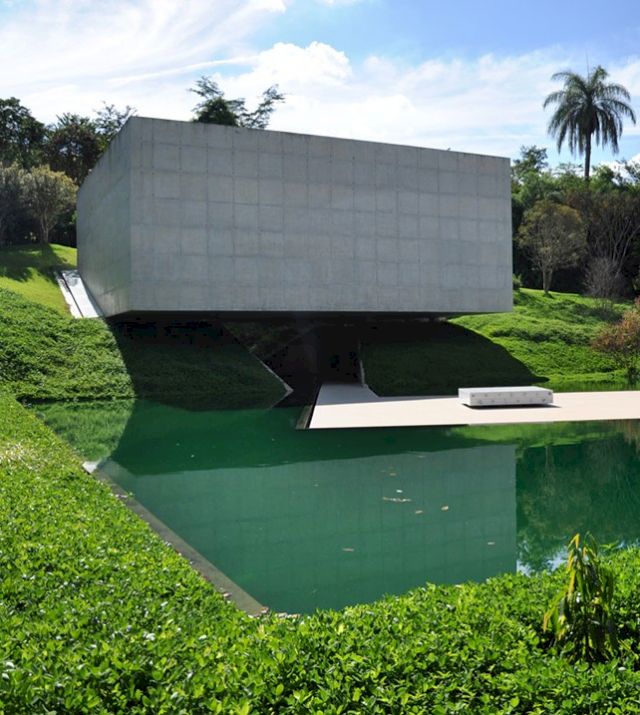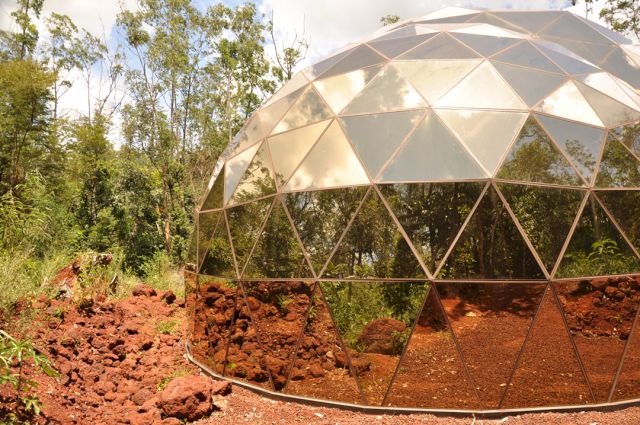BMW Art Guide by Independent Collectors
Follow The Yellow Brick Road
Inhotim – Instituto de Arte Contemporânea e Jardim Botânico

A paradise located in Brumadinho, close to Belo Horizonte, Inhotim is a tropical and artsy jungle of its own. You have to make your way through a rich botanical garden and a breathtaking landscape to gain access the institution's many contemporary art pavilions that boast artworks by Olafur Eliasson, Dan Graham, Cildo Meireles, amongst many others – Inhotim is a art-studded Garden of Eden.
The term institution is turned upside down once you've experienced Inhotim. Unlike other busy and hierarchical art institutions and museums across the world, Inhotim does not have any pretension to please the industry or eventual sponsors. The founder Bernardo Paz, a billionaire and mining magnate remains silent about his brainchild, rarely giving interviews to press and allowing pictures to be taken on site. The seemingly endless open space was founded in the late 1980s by Paz and served as a private collection until 2006 when Paz made the decision to turn it into a public institution. Nothing prepares you for the beauty of this truly immersive experience, where contemporary art goes hand in hand with the preservation of remnants of the Atlantic Forest and the Brazilian savanna.
![Inhotim [outdoor] museum and botanical park Brumadinho, MG – Brasil | Amended Image by Vinicius Depizzol from Vitória, Brasil (Inhotim)](/site/assets/files/2185/2020-01-13_23-43-26_follow-the-yellow-brick-road_bmw_art_guide_by_independent_collectors-1.640x0.jpg)

Inhotim is the realization of a personal dream, creating an impact that goes far beyond the cultural purpose itself. The institution does not only make a sustainable statement by cultivating rare tropical plants and maintaining thousands of hectares of Brazil's varied landscape, it also helps to create employment within the region, with over two thousand employees working on the maintenance of the site on a daily basis. Surrounding villages are provided with appropriate infrastructure and enjoy the economic benefits of local tourism, whilst local schools profit from a tailor-made educational program provided by the institution.
Whilst following the institute’s brick road, I discovered work of international artists such as Paul McCarthy, Doug Aitken and Matthew Barney as well as Brazilian artists such as Adriana Varejáo, Tunga or Hélio Oiticica, and this leads me to my top three.
We begin with Doug Aitken. His Sonic Pavilion (2009), which is located on top of a hill, is an ethereal empty circular space made out of glass and steel, where you can listen to the sound of the earth breathing in real time, transmitted by highly sensitive microphones installed at a depth of 200 meters below the ground, and emphasized by sound amplification equipment. If you lay down on the wooden structure you can actually feel the sound waves penetrating your body – a soothing and intangible experience.

Next there was Olafur Eliasson's Viewing Machine (2001-2008), where a turntable kaleidoscope creates an effect of reflecting light with six mirrors forming a hexagonal tube, enabling the viewer to experience a unique and playful reflection of Inhotim's astonishing landscape.
Finally, after encountering memorable gallery pavilions I decided to leave the guided path, and to see where the art filled gardens take me. The Vegetation Room Inhotim (2010-2012) by Spanish artist Cristina Iglesias was somewhat tricky to access, as it is hidden within the institution's woodland, but it was worth the detour. Crafted from stainless steel, bronze, polyester resin and fiberglass, the installation acts like a small labyrinth, an illusion of the infinite, a particular take on nature and the way architecture interacts with it within the institution's tropical maze.
Needless to say, Inhotim is a unique platform for contemporary art, one that does not only serve art for art's sake. It is a personal initiative that is deeply implemented into sustainable and social purposes. A phenomenon that uses art to redefine the purpose of cultural spaces – the realization of a modern-day paradise.
Elisabeta Tudor was born near Bucharest but grew up in France and Germany. Her interest in writing was inspired by a stint at Sleek Magazine five years ago. Today, she works as a freelance journalist and consultant in Paris, and writes about fashion and art for international publications, such as Vogue Italia, Nowfashion, Style.com/Arabia, Indie Magazine, Harper's Bazaar Art and Kunstzeitung, among many others.
All images via Wikimedia Commons; CC Licence Info
More Information on Inhotim